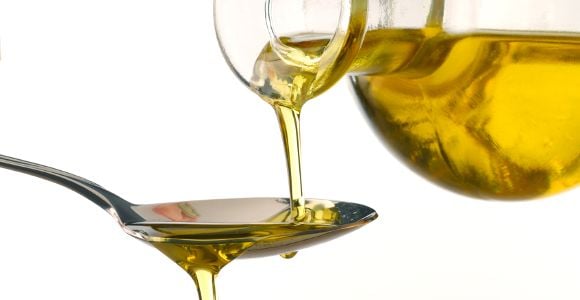A few decades ago, fats were horrible and thought to be so bad for you. More recently, the news became that some fat is necessary and that some types of fats were actually good for you. What is the current news on fats? Which are "good" and "bad," and why?
It's hard to really classify any food or edible as good or bad, but here's the lowdown on fats as we know it for now. There are three main types of fats - unsaturated, saturated and trans fats. The saturated and trans fats are mostly what make up the "bad fats," and here's why. Saturated fats come mostly from animal flesh and products, and from some plant products. They are fatty acid molecules with the hydrogen atoms filling all available carbons, so that they are no carbons free. Examples of these are lard, butter, full fat ice cream, cheese, meats, etc.
Depending on the various types of fats that fall within the domain of "saturated," different types have different lipid profiles. For example, beef fat has a lot of palmitic acid which research is suggesting could be implicated in weight gain and hindered weight control and insulin action. On the other hand, coconut has a higher lauric acid, which although coconut oil is considered a saturated fat, its entire lipid profile is not as damaging as you would think. Studies have shown coconut oil to go through a different pathway in the body and actually be have benefits such as raising HDL and containing anti-bacterial and anti-fungal properties.
Trans fats are similar to saturated fats in that they also have carbon molecules that are all full - But they are this way because of partial or full hydrogenation - or man's intentional effort of filling the carbon molecules with hydrogen's unnaturally. Why would the food industry do this? So that when you open a box of crackers or cookies, there wouldn't just be a pile of crumbs falling out into the bowl while you are now angrily hunting for a store receipt.
How about the good fats? The unsaturated fats mean that their carbon chains are not totally full (saturated) with hydrogen atoms and there are more double bonds. Most plant-based fats are this way, and are better for your health. These can be further broken down to monounsaturated (one double bond on the carbon chain) and polyunsaturated fats (more than one double bond on the carbon chain). Many types of food and oils such as olive oil have this type of fat.
Another type of important unsaturated fats are the Essential Fatty Acids, namely eicosapentaenoic acid (EPA) and docosahexanoic acid (DHA) or Omega-3's, and gamma linolenic acid (GLA), dihomo-gamma-linolenic acid (DGLA) and arachidonic acid (AA), or Omega-6. These fats are essential because our bodies cannot make them; we must get them from our diet. Most experts agree that we have too much of the Omega-6's in our diet in relation to the Omega-3's and that we need more of the latter. While Omega-6's are found in the ever abundant corn, soy and other vegetable oils, Omega 3'smay be beneficial to the brain, joints, heart and more, and can be found abundantly in the less consumed flax, walnut and salmon, and to some extent, other foods such as avocado.
So as you can see, the news that fats are bad for you is old news - Look for foods that have the right kinds of fats, and put them in your diet in moderation.
Catherine S. Hains, MS RD has been interested in health and nutrition since she was a young child. Growing up in Fort Worth, TX, she earned a Bachelor's Degree in Broadcast Journalism from Texas Christian University and wrote for the Fort Worth Star-Telegram for 12 years. Her life-long interest in nutrition and disease prevention never waned, and she went on to earn her Master's Degree in Nutrition from Eastern Michigan University. Cathy, now a Registered Dietitian, owns Lighthouse Nutrition and Wellness in Gig Harbor, WA where she enjoys inspiring people of all ages to make losing weight and living a healthy lifestyle easy, fun and permanent. She enjoys good food, cooking and food preparation, and showing others how healthy this can be. Her other pastimes include traveling, art, music and family life. She also likes staying fit with tennis, bicycling walking and jogging, researching nutrition and helping clients be at their best. For more information on Cathy, visit www.lighthouse-nutrition.com or write to Catherine at [email protected].



